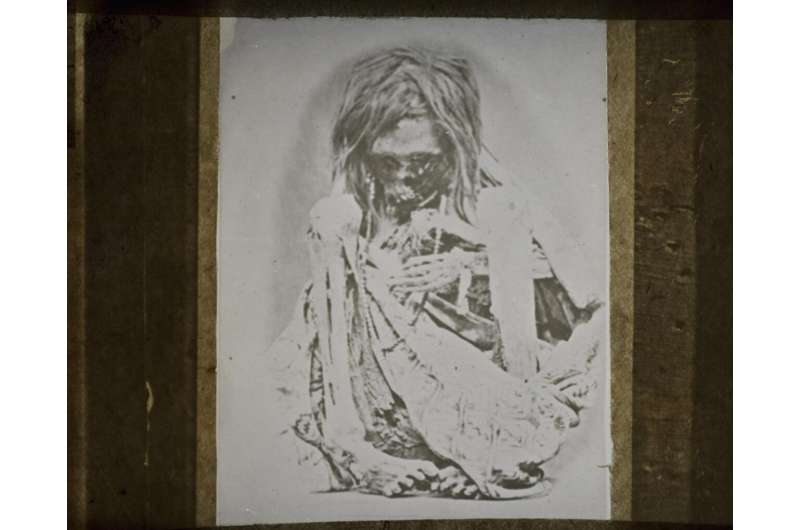June 1, 2022 report
Hair and fingernail examination suggests Inca children were drugged to keep them calm before being sacrificed

A team of researchers from Poland, the U.S. and Peru has found evidence that suggests Inca children selected for sacrifice were given drugs to keep them calm prior to their deaths. In their paper published in Journal of Archaeological Science, the group describes their analysis of hair and fingernail samples from two small Incan children who had been sacrificed on Peru's Ampato volcano.
Prior research has shown that human sacrifice was a common practice in Incan society—called capacocha, it was conducted by priests as a means of controlling the population. Ceremonies involving sacrifice were typically held to celebrate major events, such as the birth of a royal son, or a battle victory. Those selected for sacrifice were typically young women and children. In this new effort, the researchers studied hair and nail samples that had been left behind by two sacrificial Incan children (aged 6 or 7 years old), approximately 500 years ago.
In studying, the samples, the researchers found small amounts of cocaine and also two compounds found in a flowering vine known to be used to make ayahuasca—a hallucinogen. The two compounds, known as harmaline and harmine are monoamine oxidase inhibitors.
The researchers note that they did not find evidence of DMT, however, which is another major ingredient in ayahuasca. It was not clear if its absence was intentional or was merely an accident. Regardless, its absence meant that the drugs given to the children would not have resulted in hallucinations, instead, they would have simply calmed them, making things easier for those tasked with sacrificing them.
The researchers note that the children would have known what was going to happen to them, weeks in advance; thus, they would very likely not have gone along willingly with a sacrifice. Giving them drugs to calm them down would have allowed for forcing them to march to their death without them putting up a fuss. People chosen for sacrifice came from all across the empire, which would have meant a long journey prior to being killed during a sacrificial ritual. The researchers note that giving the victims calming drugs appeared to work—Spanish colonizers wrote of witnessing Incan sacrificial rituals where the victims appeared to be calm and ready for execution.
More information: Dagmara M. Socha et al, Ritual drug use during Inca human sacrifices on Ampato mountain (Peru): Results of a toxicological analysis, Journal of Archaeological Science: Reports (2022). DOI: 10.1016/j.jasrep.2022.103415
Journal information: Journal of Archaeological Science
© 2022 Science X Network





















